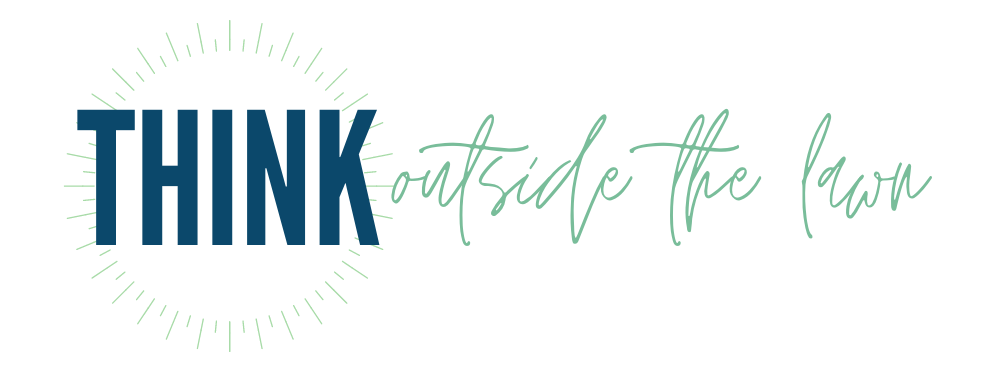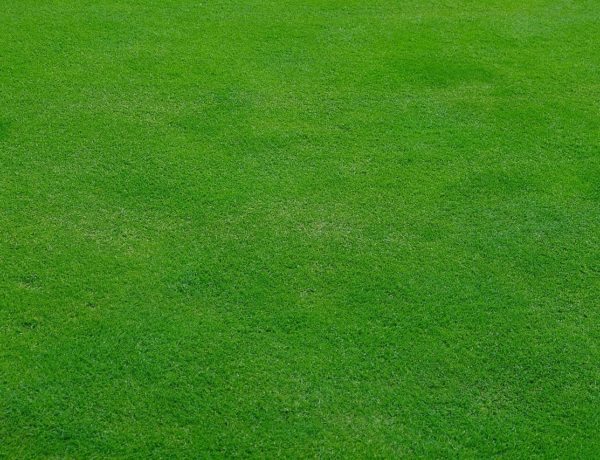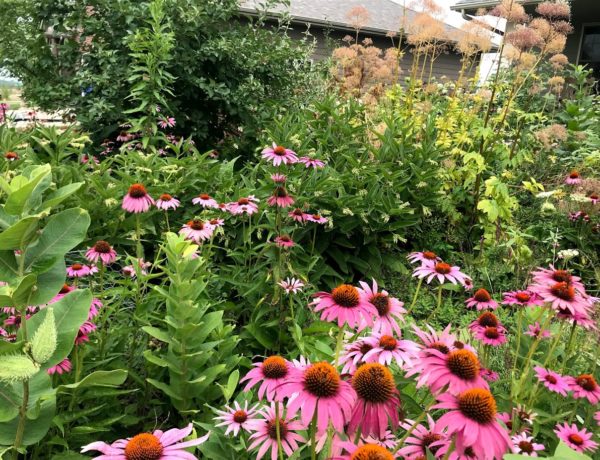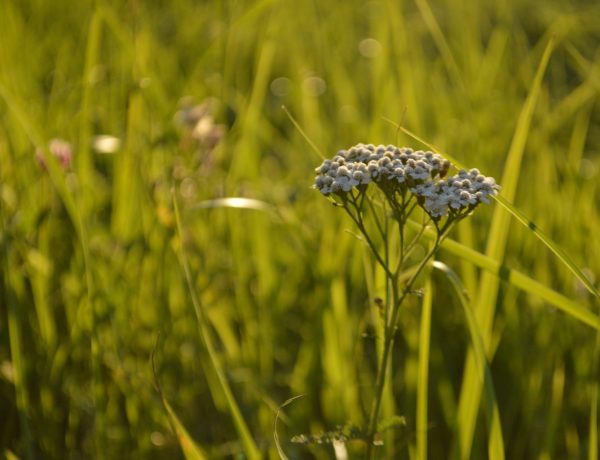Are you looking for landscaping that requires the least amount of time and resources? Today we’re going to determine if a lawn is right for you, especially if you are looking for something low-maintenance and eco-friendly.
The lawn investment
Lawns require mowing about once a week. Depending on your lawn and your mower, that can take anywhere from 30 minutes to a few hours. In addition, you need to maintain your mower and other lawn equipment. Most people also do one or more of these additional tasks: trimming, watering, fertilizing, applying pesticides and/or pulling weeds, aerating, dethatching, raking, and reseeding.
Depending on the source, Americans spend between 70 and 150 hours per year on yard work. They also collectively spend about $40 billion per year on their lawns. This article has a bunch more disturbing statistics including water, fertilizer, and pesticide use.
“But I hire out,” you might say. Well, then you are paying someone else money to do it, and you traded your time to make that money. This means you are likely either prioritizing your lawn over other things (like saving, investing, traveling, etc.), or you are working more to make more so you can also have those things. Either way, it will cost you time.
Even so, lawns can be very useful and worth the effort. So,should you go with a lawn?
Questions to ask yourself
Why do you have/want a lawn?
- Do you prefer the look of lawns over other types of gardens?
- Do you, your family, and your pets play in or otherwise utilize the lawn?
- Do you think it might just be the least work?
- Do you want to fit in socially?
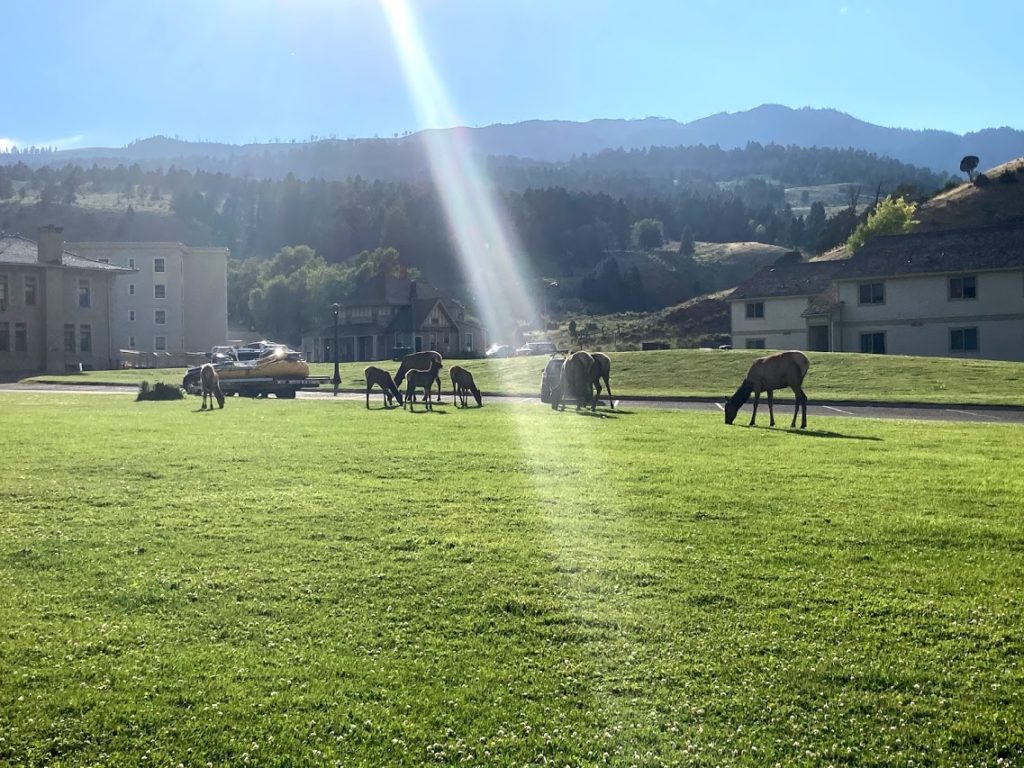
How much time do you spend on your lawn?
Track how much time you spend on your lawn over the growing season. How important are those hours to you? If they are more important than your lawn, then you may want to consider replacing it with something lower maintenance (see below).
Do you need a lawn?
Some people are required to maintain lawns, usually because of homeowners associations. If that’s your case, you’ll need to keep the lawn or work to change the rule holding you back from lawn freedom.
Should you keep your lawn?
If you take great pride in your lawn, and you love the look and utility of lawns, then spending your time and money on it makes sense, but read on, because you’ll find some ways to make your lawn cheaper and more eco-friendly. If you don’t really see a compelling reason to keep spending all your time and money on a lawn, I’ve got some options for you.
Keep the lawn, reduce the maintenance
There are ways to make a lawn easier to maintain and more eco-friendly.
1. The less you fertilize and water, the slower your grass will grow.
It’s not a good idea to wait until the grass gets long and then mow it super short. This will stress the grass and invite many more weeds, some of them invasive, which you will then have to spend time eradicating. You should mow high on a regular basis, but if your lawn is growing more slowly, you can stretch the time between each mowing.
2. Let non-invasive “weeds” grow.
Many of them actually are trying to improve the quality of the soil. And if you have a hot, dry spell, your lawn will be greener than others who don’t water but spray for weeds, because some of your weeds won’t go dormant in drought like grass.
3. Don’t worry about what anyone else thinks of your lawn.
“But, Veronica, my neighbors will hate me!” It’s your lawn, not theirs. As long as you’re following your city’s ordinances, you have all the freedom in the country to do whatever you want. Even so, I live in a neighborhood that prizes meticulous lawns, and all of my neighbors love our yard. You might be surprised by your neighbors’ reactions. Especially if you share your bounty!
4. Don’t rake.
Just mow over the leaves to shred them. This saves you time raking and fertilizing. Leaving leaf litter unmowed is also an option and offers great winter habitat for wildlife, but it can smother your lawn too. On the bright side, if you are wanting to replace your lawn with different landscaping, the trees will sheet mulch it for you!
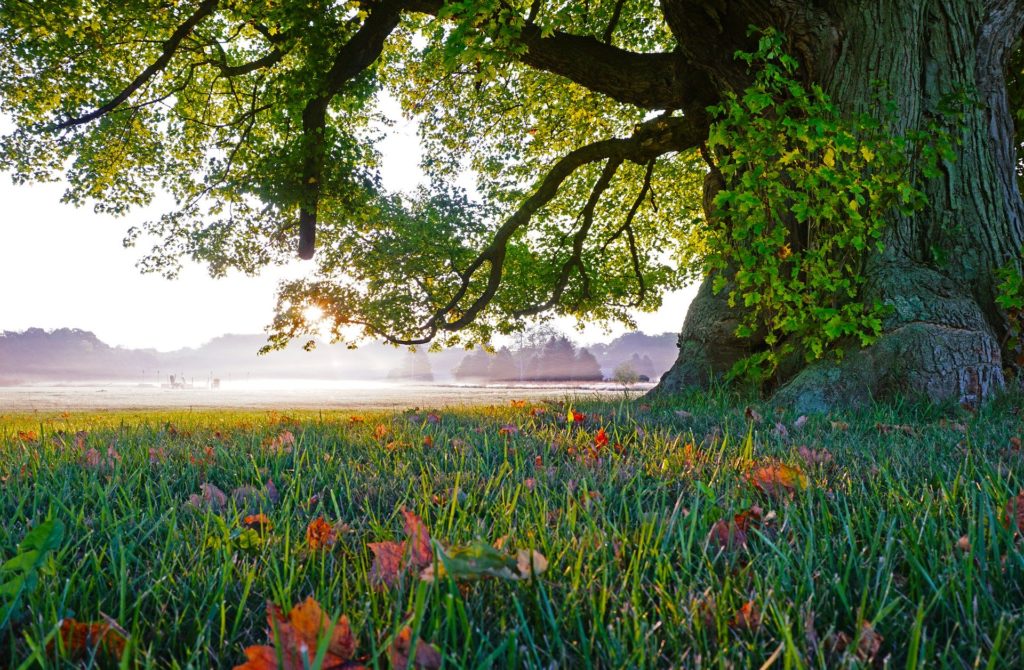
5. Use the mulching option on your lawn mower.
Instead of bagging your lawn clippings, just let the lawn mower mulch them and distribute them back into the lawn. This will help return fertility back to the soil. You can also bag those clippings and use them to mulch your gardens. Or go back and forth. If you get lots of leaf litter, you don’t have to worry about mulching the grass, because you’re going to mow over and mulch the leaf litter, right?
6. Choose better grasses.
Some grasses are easier to maintain and more eco-friendly than others. You’ll want to make sure you have a mix of cool season and warm season grasses, the right grasses for the amount of shade you have, and native grasses that can tolerate your climate’s extremes. There are also grasses that grow low or fall flat so you might not have to mow at all (check with your city’s ordinances if you live in one).
7. Replace gas-powered lawn equipment with electric equipment.
Electric lawn equipment requires less maintenance than gas-powered. Mainly the tasks include sharpening the blade on the mower, replacing string in the trimmer, and replacing batteries, which can last for years. They’re also quieter and don’t smell like gas. The downfall of some electric equipment is the obsolescence problem. Eventually manufacturers stop making certain models and then stop making certain batteries, and unless you are very handy, you might end up having to replace the whole machine. There’s always a payoff.
Replace the lawn
If you don’t use your lawn, and you don’t particularly prefer the look of a lawn over other options, or you want to save time on lawn maintenance while also having a great looking yard, consider replacing the lawn with something else. Here are some options:
- Wildflower gardens
- Native prairie gardens
- Wooded area/grove
- Food forest
It depends on your property’s size, location, and other conditions, but the more natural a garden is, the easier it is to maintain. What do you want out of it? Do you just want something easy? Pretty? Do you want something that’s beneficial to the local wildlife or want food and medicine for your family? You really can grow food and medicine in a low-maintenance garden. I do it in my yard, and it can be very productive.
My front yard fruit tree guilds
Here is my front garden. It consists of only perennials or self-seeding annuals. Most of the plants in the garden are edible or medicinal. The rest are pretty and beneficial to wildlife. I designed this garden to form a little ecosystem where all the plants and the visiting animals work together to support each other, requiring less work from me. This is called a guild.
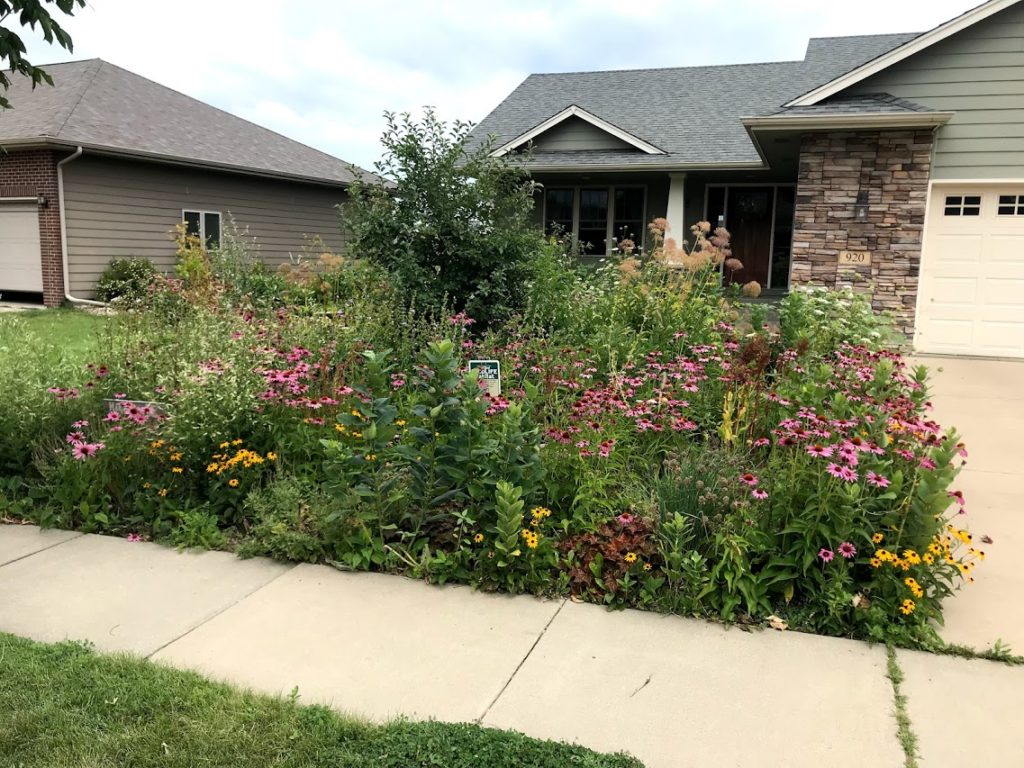
Here is a list of many of the plants harmonizing in my front yard:
- Apple tree
- Plum tree
- Silver buffaloberry shrubs
- Native currants
- Honeyberry shrubs
- Chives
- Garlic
- Chicory
- Yarrow
- Comfrey
- Milkweed
- Salvia
- Sunflowers
- Wild carrots (queen anne’s lace)
- Mints
- Cilantro
- Dill
- Parsnip
- Salsify
- Lovage
- Rhubarb
- Rainbow orach
- Lambs quarters
- Wild strawberry
- Cultivated straberry
- Purple poppy mallow
- Coneflower (echinacea)
- Black-eyed susan
- Garden sorrel
- Salad burnet
- Valerian
- Anise hyssop
- Wild sunflower
These plants grow densely and the ground is also mulched, so most weeds are suppressed. I only spend maybe a total of one hour, probably less, in the entire growing season pulling weeds. Unless I’m trying to germinate new seeds, I also do not have to water this garden. These plants all grow like weeds, so I don’t need to fertilize other than chop-and-drop mulching and whatever the animals leave behind for me.
We have a lawn, too, and we spend exponentially more time just mowing the lawn than I spend on the garden. We chose that trade-off because we do use our lawn areas. That’s something we will continually assess as our family grows and changes. But my front gardens are my absolute favorite part of our yard right now.
I’ll be writing much more on how to implement low-maintenance gardens, so subscribe for email updates to get notified of new content. If you want to make changes now and don’t feel like you can take the time to learn everything, contact me and I can help you remotely with a consultation.
